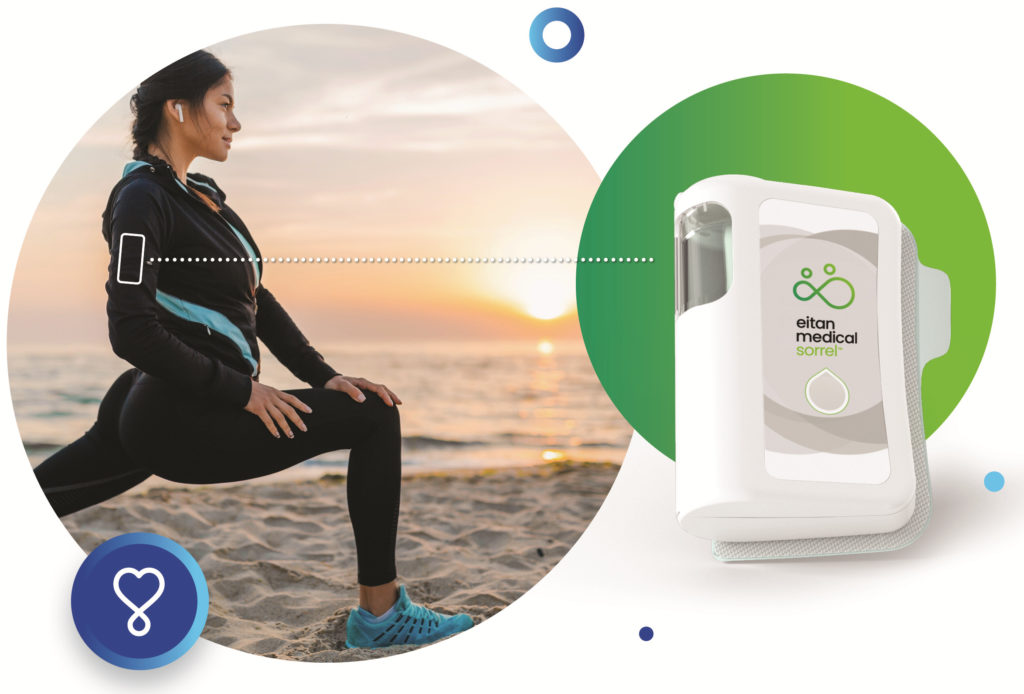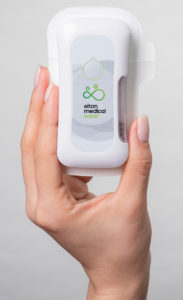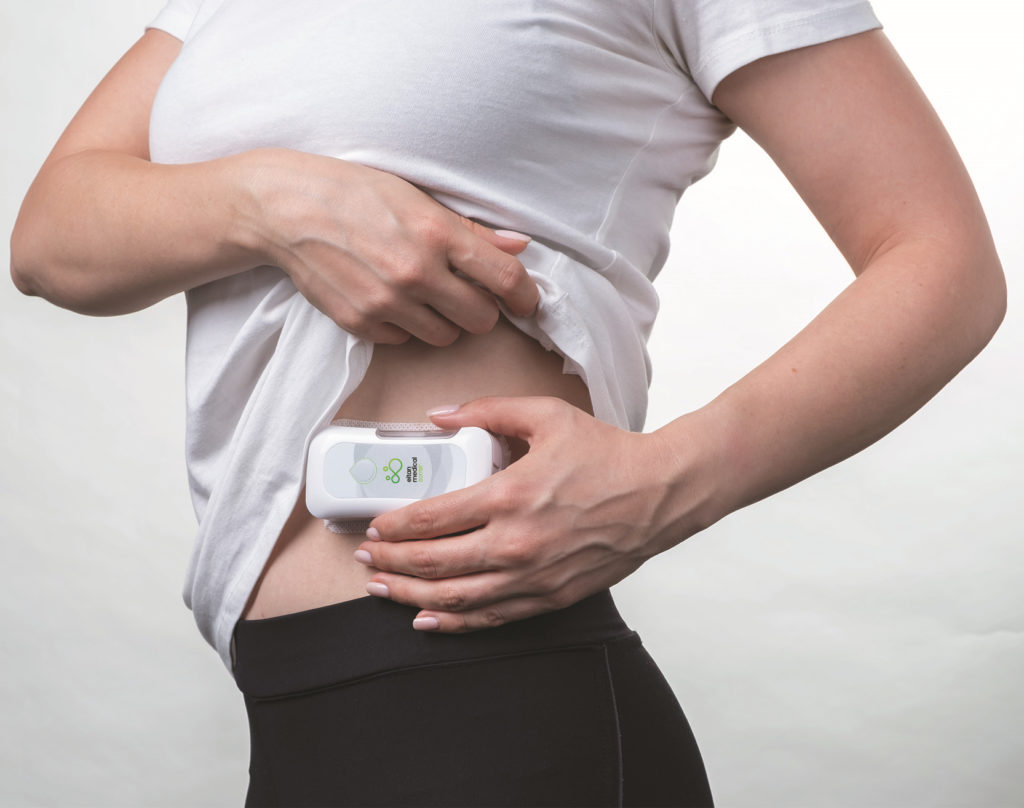To Issue 134
Citation: Katz M, “Turning Connected Drug Delivery Pipe Dreams Into Reality”. ONdrugDelivery, Issue 134 (Jun 2022), pp 75–78.
Mindy Katz discusses the benefits of integrating homecare technologies that are patient centric and connected.
Prior to the fateful month of March 2020, the introduction of hospital-grade medical devices and technologies into the home had been looming on the horizon. Catalysed by covid-19, the healthcare industry had to fast-track the deployment of remote care solutions, including telehealth, digital health and connected devices, to deliver care at home.
“For more independent homecare treatments to succeed, providers will need to offer solutions that are patient centric and connected.”
Unlike previous industry trends, the need for home-based care solutions was strongly influenced by patient demand, rather than by major players (providers, hospitals, payers, etc) within the healthcare sector. With hospitals overloaded and fear of contagion at an all-time high, people were hesitant to receive care in hospitals. In addition, hospitals were limiting the number of non-critical services being made available. This resulted in a greater need for homecare workers, as observed by the National Association of Homecare and Hospice,1 which saw a 125% increase in February 2021.
Understandably, the implementation of homecare technologies and the subsequent trend towards developing patient-centric devices that would allow patients to “selftreat” brought about a behavioural change from providers and patients. This change will eventually see hospitals and clinics focus on providing critical care and enable patients to care for themselves independently in less-critical situations from the comfort of their homes. In particular, for patients with chronic conditions without acute incidents, home-based models of care can become the primary pathway for care delivery.
However, for more independent homecare treatments to succeed, providers will need to offer solutions that are patient centric and connected to ensure patient adherence and regimen upkeep, and to maintain open lines of communications with care providers, especially within the drug delivery space.
DIFFICULTIES OF HOME-BASED DRUG DELIVERY
Providers face unique challenges when shifting drug delivery treatments to the home. These difficulties can include the ability to accurately and remotely monitor patients, a lack of access to treatment logs, safety concerns resulting from not being notified of alarms and troubleshooting errors.
With direct and constant connection between patient and clinician in the hospital setting, healthcare teams can review treatment data, understand patient adherence levels and receive alerts and notifications in real time. By adding these capabilities to homecare-optimised devices, there is the potential to improve patient care and ensure the efficacy of drug delivery regimens from a distance, instilling a sense of trust in home-based solutions for both providers and patients.
“To ensure long-lasting integration into the homecare environment,
device manufacturers will need to increase the ease of use of devices.”
THE NEED FOR PATIENT CENTRICITY
Before even considering the doors that open with connectivity, medical device manufacturers need to develop solutions that are more patient centric to accommodate the move towards the home, allowing both patients and caregivers to become more independent in the care delivery process. This is especially difficult to achieve within the world of drug delivery, as these devices are more complex to operate and require more clinical protocol navigation.
To ensure long-lasting integration into the homecare environment, device manufacturers will need to increase the ease of use of devices. By adding features such as intuitive protocol instructions and embedded safety software, homebased patients will be better positioned for success. In fact, increased ease of use through human factors usability testing is now mandated by the US FDA,2 which will hopefully reduce medication dosage errors and increase positive outcomes. Additionally, this empowers patients and caregivers who lack professional training to support and receive care with confidence (Figure 1).

Figure 1: Eitan Medical’s Sorrel drug delivery device is wearable, offering mobile drug delivery options.

Figure 2: Eitan Medical’s Sorrel wearable drug delivery platform.
INTRODUCING PHARMA TO THE MIX
Due to an increased understanding of the growing acceptance of, and affinity for, home-based patient-centric approaches, pharmaceutical companies are now encouraged to make drug delivery easier for patients to manage on their own. One of the main ways in which pharmaceutical companies can improve the drug delivery patient journey is by changing administration routes, mainly moving away from intravenous towards subcutaneous drug delivery, generally at a cost of reformulation and new regulatory filing. This change has the potential to create routes of drug delivery as safe as those administered in hospital settings,3 but which allow more patients to self-treat in their own homes (Figure 2).
WEARABLES PAVING THE WAY
Simultaneously, the nature of injectable drugs is changing, with advancements in biotech resulting in a surge of biologics reaching the market. With higher viscosities and larger volumes than chemically synthesised drugs, these medications require an alternative delivery system to traditional handheld injectors. Wearable injectors address this issue, offering devices that accommodate larger-volume and higher viscosity drugs.
Moving forward, wearable drug delivery devices that are primary-container agnostic may be increasingly adopted, potentially providing flexibility for pharmaceutical companies and faster turnaround times for the development of one primary container- based device to the next. The benefit is that this approach allows pharmaceutical companies to enter the homecare market faster and more efficiently with drugs that can be safely self-administered by the patient using a wearable drug delivery platform (Figure 3).

Figure 3: Eitan Medical’s Sorrel wearable drug delivery platform in action.
“By giving clinicians a clearer picture of patient status from a distance, they will be positioned to act quickly to ensure proper care delivery and compliance.”
CONNECTING THE HOME AND THE HOSPITAL
With advanced connectivity capabilities, such as Bluetooth and near-field communication, being widely used, we are in the process of witnessing change within the healthcare sector. Now, clinicians will be able to access treatment data remotely, expanding the reach of care. With regards to wearable injectors, these smart, connected devices, combined with a series of user indicators including visual, audio and tactile, can help guarantee a safe, easy and successful self-administration experience.
By giving clinicians a clearer picture of patient status from a distance, they will be positioned to act quickly to ensure proper care delivery and compliance. Realtime remote patient monitoring enabled by advanced connectivity capabilities, beyond the capabilities of smartphones today, can be instrumental in maintaining the safety of patients at a distance, even for patients with complex situations.
AGGREGATING DATA FOR A MORE PERSONALISED EXPERIENCE
Additionally, analyses of aggregated patient data can enable caregivers to identify treatment patterns and make data-driven decisions to improve care optimisation. Of course, near-time gathered data allows for near-time medical interventions. This offers a more personalised experience for patients, which, considering co-morbidities and complex patient conditions, could have serious implications. This approach can be seen within the realm of oncology, with oncologists altering drug dosages and prescription plans to provide the care an individual patient needs more effectively.
From a big data perspective, connected drug delivery devices can offer pharma, providers, payers and patients a tremendous boost. In better understanding the actual usage of drug delivery devices, the industry can better prepare for the future of healthcare delivery.
COMING FULL CIRCLE WITH PATIENTS, PROVIDERS AND PAYERS
Understandably, providers, patients and payers are intertwined. The addition of connectivity allows for improved patient compliance, further ensuring that patients are adhering to their medication regimens at home. This built-in accountability will tell clinicians if their patients are properly abiding by their treatment plan. As a result, this confirmation can act as justification for the expense of the treatment, closing the loop between medications prescribed and care delivered.
MOVING AHEAD AND STAYING CONNECTED
Integrating technologies for homecare that are patient centric and connected will help healthcare systems become more effective, giving them the ability to manage larger patient populations with the same resources. This also paves the way for increased patient comfort, lower hospital readmission rates and, ultimately, better outcomes. Looking ahead, we can expect homecare to continue becoming more connected and patient centric – the results of which will be industry-changing.
REFERENCES
- “Demand For Home Care Workers Has Risen 125% Since March, NAHC Says”. KHN Morning Briefing, Feb 1, 2021.
- “Human Factors and Medical Devices”. US FDA Device Advice, May 2, 2022.
- Bennett C, “At-Home Subcutaneous Injection of Trastuzumab Meets Safety Endpoint”. Oncology Times, 2017, Vol 39, pp 26–27.

